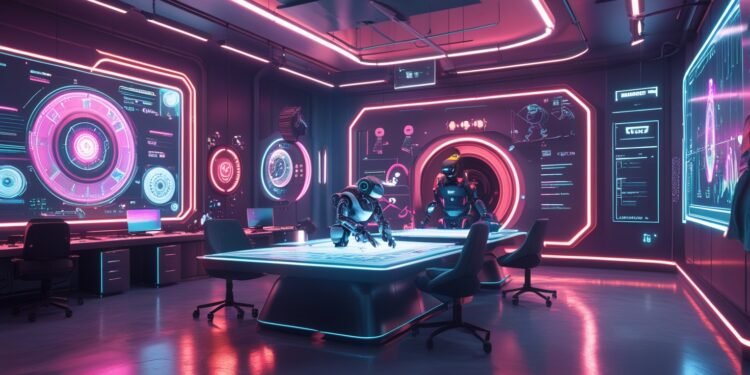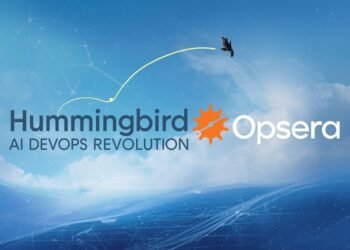Generative AI is no longer a futuristic concept — in 2025, it’s the engine powering the next wave of creative innovation. From streamlining marketing campaigns to producing high-quality multimedia content at scale, generative AI creative workflows are transforming the way industries create, collaborate, and deliver value.
This isn’t about replacing human creativity. It’s about amplifying it — taking ideas from spark to polished execution faster than ever before, while enabling creative teams to focus on strategy, storytelling, and impact.
The Evolution of Creative Workflows
In the past, creative projects required a linear, resource-heavy process: brainstorming, concept approval, asset creation, revisions, and final delivery. Each step was often siloed between departments or agencies, slowing progress and increasing costs.
Generative AI has flipped that model on its head. Today, AI tools integrate directly into creative pipelines, allowing multiple steps to happen in parallel. Content ideation, design, localization, personalization, and distribution can be handled within a unified AI-driven environment.
This shift has brought three immediate benefits:
-
Speed – Weeks-long production timelines have been compressed into hours or days.
-
Scalability – Teams can produce hundreds of unique assets in the time it once took to create a single version.
-
Experimentation – Creative ideas can be tested, iterated, and optimized on demand without exhausting resources.
How Industries Are Leveraging AI Creative Workflows
Generative AI’s creative impact is being felt across multiple sectors. Here’s how some industries are reaping the benefits:
1. Media & Entertainment
Film studios and streaming platforms now use AI to generate scripts, storyboards, and even pre-visualized scenes. Gaming companies produce AI-generated characters, environments, and dialogue trees that evolve dynamically with player choices.
2. Retail & E-Commerce
Retailers deploy AI to create product imagery, lifestyle photos, and personalized ad variations — without costly photo shoots. Seasonal campaigns can be spun up in hours, with each variation tailored to audience demographics and interests.
3. Healthcare
Medical organizations use generative AI to create patient education videos, interactive simulations for training, and translated content for multilingual accessibility — all while adhering to compliance standards.
4. Education & Training
Educational publishers and institutions build AI-driven learning materials, explainer videos, and gamified experiences to improve engagement and retention for diverse learners worldwide.
Key Technologies Driving the Shift
The rise of generative AI creative workflows is powered by advancements in:
-
Multimodal AI Models – Capable of producing text, images, video, and audio from a single prompt.
-
AI-Assisted Editing – Intelligent suggestions for copy refinement, design tweaks, and performance optimization.
-
Prompt Engineering Tools – Allowing creative teams to produce highly specific outputs without deep technical knowledge.
-
Integration APIs – Connecting AI capabilities directly into existing creative software stacks like Adobe Creative Cloud, Canva, and Figma.
The Human-AI Collaboration Model
The magic happens when humans and AI work together. AI acts as the fast, tireless assistant that generates initial drafts, options, and variations — but humans bring the intuition, brand vision, and cultural awareness that AI still lacks.
For example:
-
A marketing director uses AI to produce 20 ad headline variations in seconds.
-
The creative team selects the strongest ideas and adds emotional nuance.
-
AI then adapts those headlines into platform-specific formats for social media, email, and display ads.
This hybrid model allows for more creative energy to go into storytelling while AI handles the heavy lifting of production and adaptation.
Challenges & Risks
Despite the benefits, adopting generative AI creative workflows isn’t without challenges:
-
Quality Control – AI-generated outputs still require human review to ensure accuracy and brand alignment.
-
Ethics & IP Rights – Content ownership, plagiarism risks, and AI training data sources are under legal scrutiny.
-
Bias & Representation – Without oversight, AI can unintentionally perpetuate stereotypes or exclude diverse perspectives.
-
Security Risks – AI systems can be targeted for data leakage, prompt injection, or model manipulation if not secured.
Organizations that succeed with AI workflows are those that implement clear usage guidelines, ethical review processes, and compliance checks from day one.
Best Practices for Implementing AI Creative Workflows
If your business is ready to make the leap, follow these proven strategies:
-
Start with High-Impact Use Cases – Identify repetitive, time-consuming creative tasks that AI can streamline immediately.
-
Integrate, Don’t Replace – Embed AI into existing creative tools rather than trying to rebuild workflows from scratch.
-
Train Your Team – Equip creative staff with prompt engineering skills and AI literacy to maximize value.
-
Maintain a Human Review Layer – Always have a human approve final creative outputs before publishing.
-
Track Performance Metrics – Use analytics to measure the ROI of AI-generated assets compared to traditional methods.
The Future: Adaptive, Real-Time Creativity
Looking ahead, AI creative workflows will become increasingly adaptive and context-aware. We’ll see:
-
Real-Time Campaign Adjustments – AI will analyze engagement data live and automatically swap out underperforming creatives.
-
Fully Immersive Media – Generative AI will merge with AR/VR to create interactive brand experiences on demand.
-
Voice-Driven Creation – Teams will generate complex campaigns with natural speech commands instead of written prompts.
By 2030, the concept of a “final version” may disappear altogether — creative assets will continuously evolve in response to audience behavior and market trends.
Conclusion
Generative AI creative workflows in 2025 are redefining what’s possible for businesses, marketers, educators, and content creators. They enable faster production, greater personalization, and more room for experimentation — without sacrificing quality or creativity.
The brands that thrive will be those that embrace human-AI collaboration, adopt strong governance practices, and keep pushing the boundaries of what creativity can achieve.
The creative revolution isn’t coming. It’s here. And in 2025, it’s powered by generative AI.


















